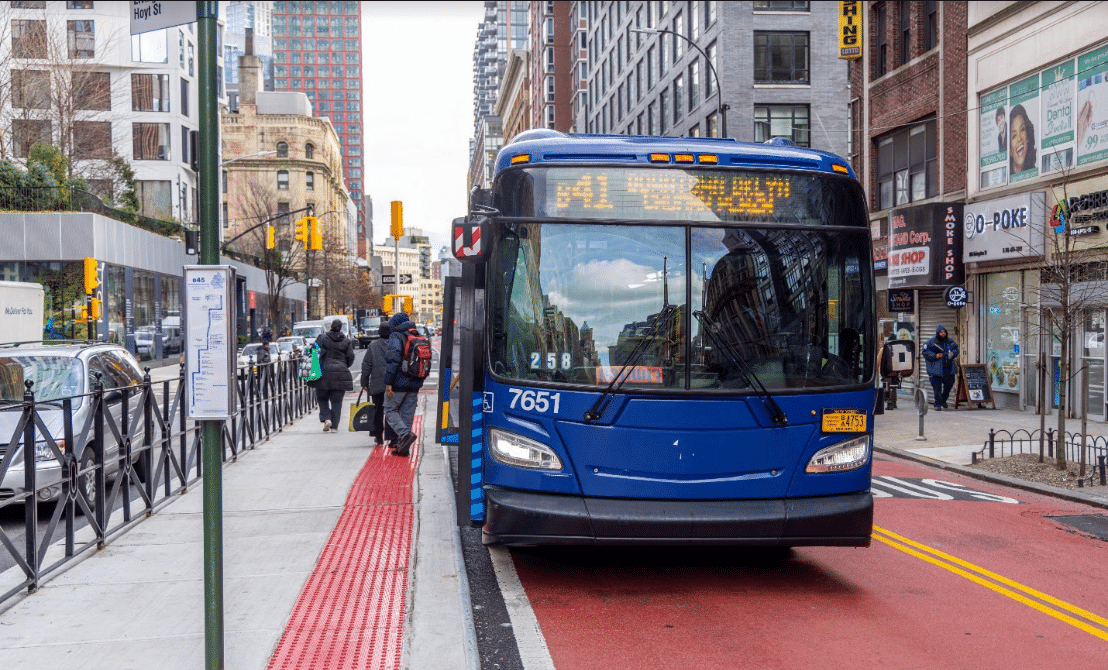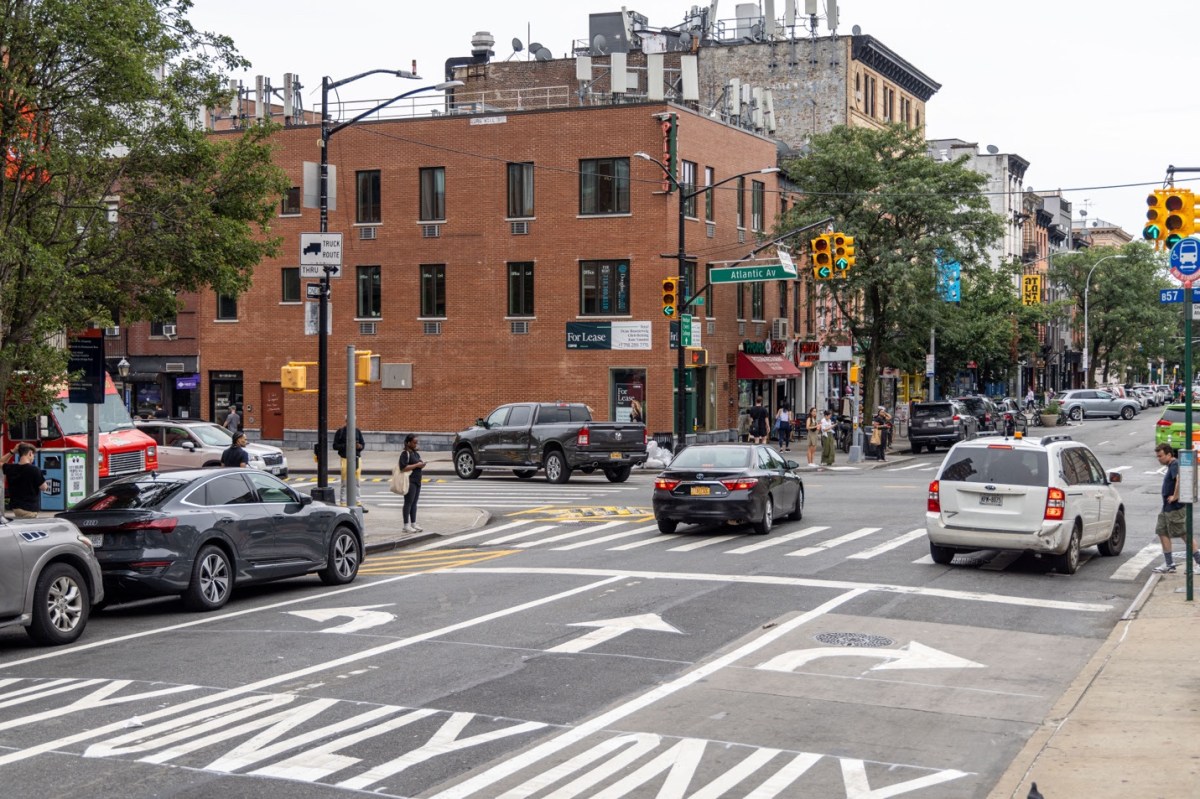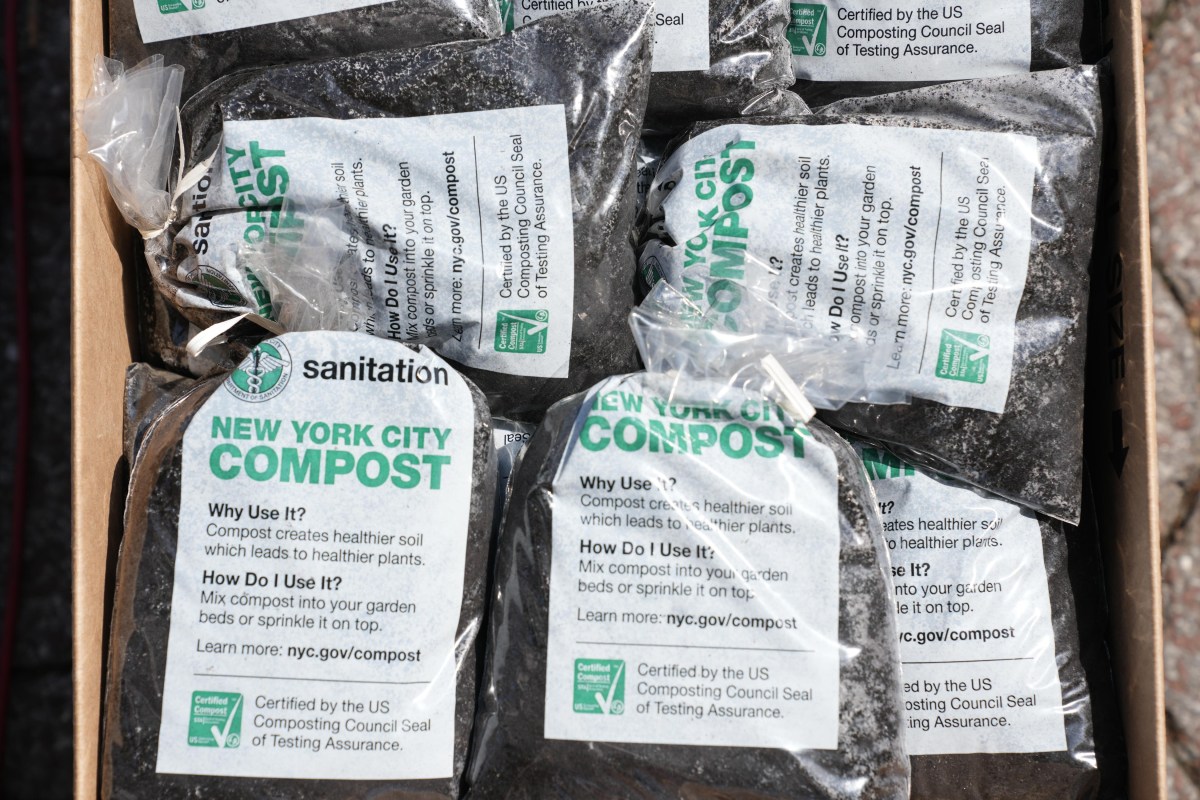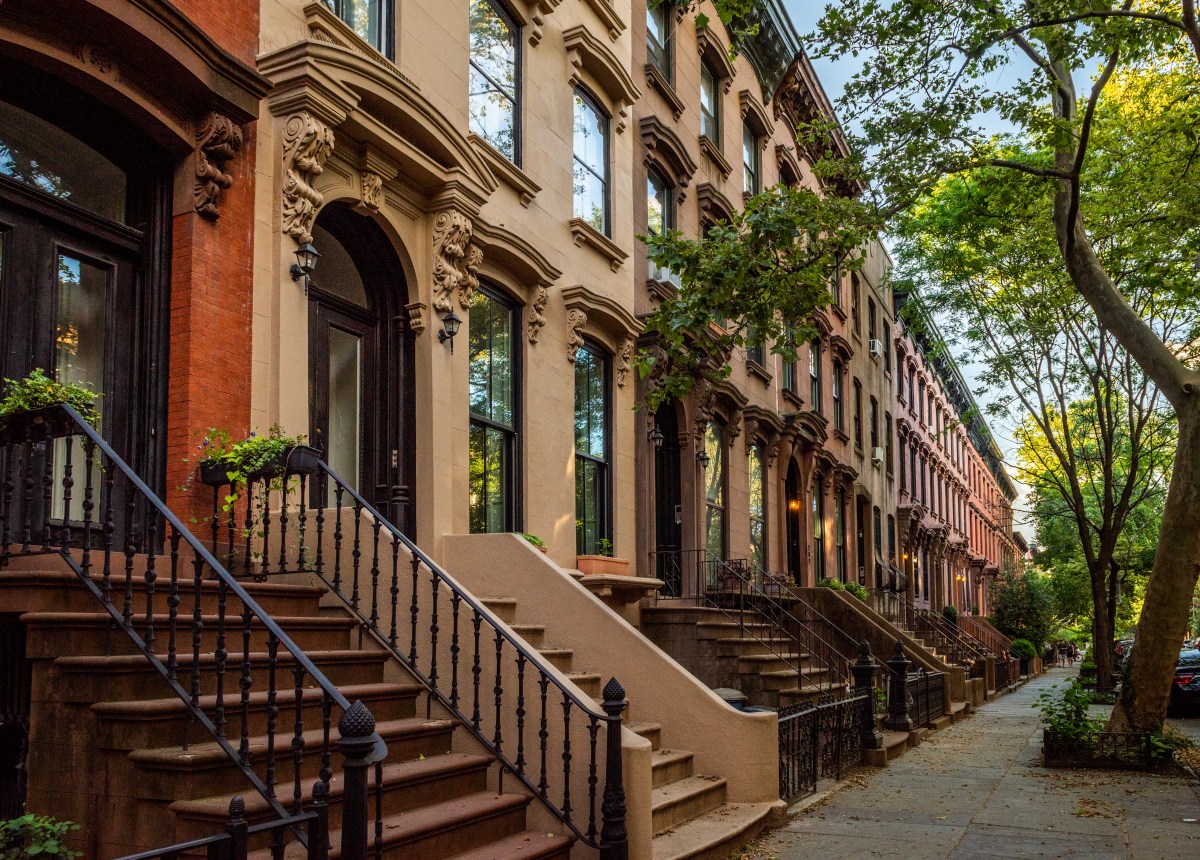The city’s Department of Transportation has finished building a new busway on Livingston Street in Brooklyn, aiming to speed up several routes that use the Kings County thoroughfare.
The Downtown Brooklyn east-west street previously hosted two-way motor vehicle traffic with set-aside bus lanes, but now hosts one-way westbound traffic to make space for two directions of physically-separated red lanes exclusively for use by city buses. The street is used by four bus lines — the B41, B45, B67, and B103 — which collectively serve 50,000 riders daily, according to DOT, and all putter along at slow speeds as they get stuck in traffic and behind double-parked cars.
The new busway is separated from motor vehicle traffic by a concrete island where riders can board eastbound buses, preventing cars from blocking bus traffic.
“Our redesign of Livingston Street has transformed what was a congested, double-parked corridor into two-way fully protected and dedicated bus lanes to get bus riders where they’re going faster — while also preserving access and enhancing safety for everyone,” said DOT Commissioner Ydanis Rodriguez in a statement. “Bus riders deserve fast and reliable service so that they spend less time in transit and more time with their families and friends, or at important appointments.”
Three of the four buses using Livingston Street log speeds below the average for Brooklyn and the city at large, which already has the nation’s most sluggish buses. The slowest is the B45, which recorded a pitiful 5.9 miles-per-hour average speed in November, according to MTA statistics.
Busways, which can also be seen on Fulton Street in Brooklyn, 14th Street in Manhattan, and Jamaica Avenue in Queens, among other places, dramatically increase bus speeds. After the city implemented the 14th Street busway in 2019, commute times were slashed dramatically for riders using the corridor’s buses. Last year, the MTA said that bus speeds had increased 40% on Queens’ Archer Avenue and Manhattan’s 181st Street after converting to busways.
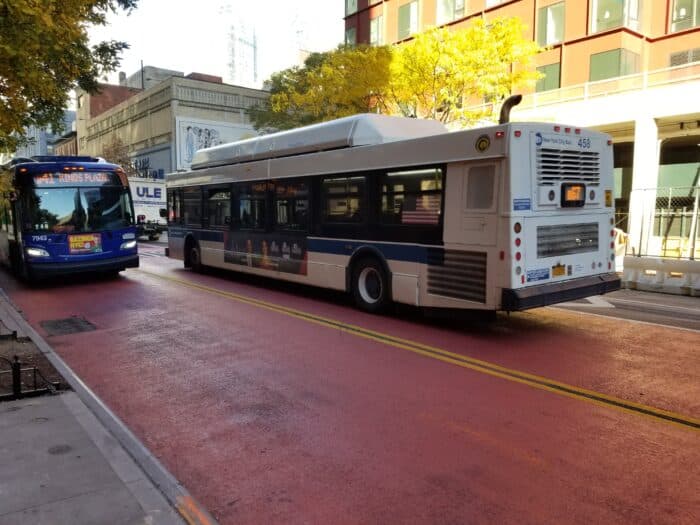
“Bus lanes are the most effective way to speed up buses,” said Rich Davey, the MTA’s subway and bus chief. “Millions of New Yorkers depend on buses, and we are committed, with our partners at DOT, to improve bus service reliability and help bus passengers reach their destinations faster and safer.”
Downtown Brooklyn is one of the most transit-rich areas of the city, a hub of numerous subway and bus lines. But it is also a hub of illegal parking: the area is home to several courthouses and numerous municipal agency offices, and employees often park illegally with a city-issued placard on their dash to forestall getting a ticket.
Illegal parking doesn’t just slow down buses, it also puts pedestrians and cyclists in danger of being struck. When local City Councilmember Lincoln Restler attempted to bike on Schermerhorn Street without actually leaving the old painted bike lane, it took him 40 minutes to ride seven blocks. The city has since implemented a protected two-way bike lane on Schermerhorn, and has also converted several roads to “shared streets” designed to slow down motorists.
“50,000 daily bus riders have been stuck in endless traffic on Livingston Street on one of the slowest bus routes in all of Brooklyn,” Restler said in a statement. “Those days are over with the new Livingston Busway!”
DOT completed 18 miles of new bus lanes in 2023, which it says is the most in history. But it’s still well behind a legal requirement to build 30 miles each year through 2026 as mandated by the city’s Streets Plan. Some planned bus improvements have been cast to the wayside after criticism from local businesses and pols.
One such plan was on Fordham Road in the Bronx, where DOT backed off a busway plan for the Bx12, the borough’s busiest route, after complaints from local pols like Congressman Adriano Espaillat and Council Member Oswald Feliz, plus the Bronx Zoo and Botanical Garden.
Mayor Eric Adams also threw his support behind a bus lane on Flatbush Avenue, Brooklyn’s primary thoroughfare and the main stretch for the plodding B41 to Mill Basin, but the proposal has since languished.



